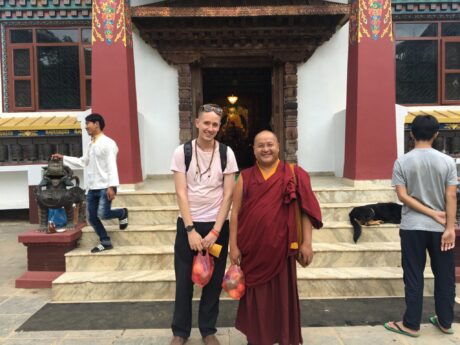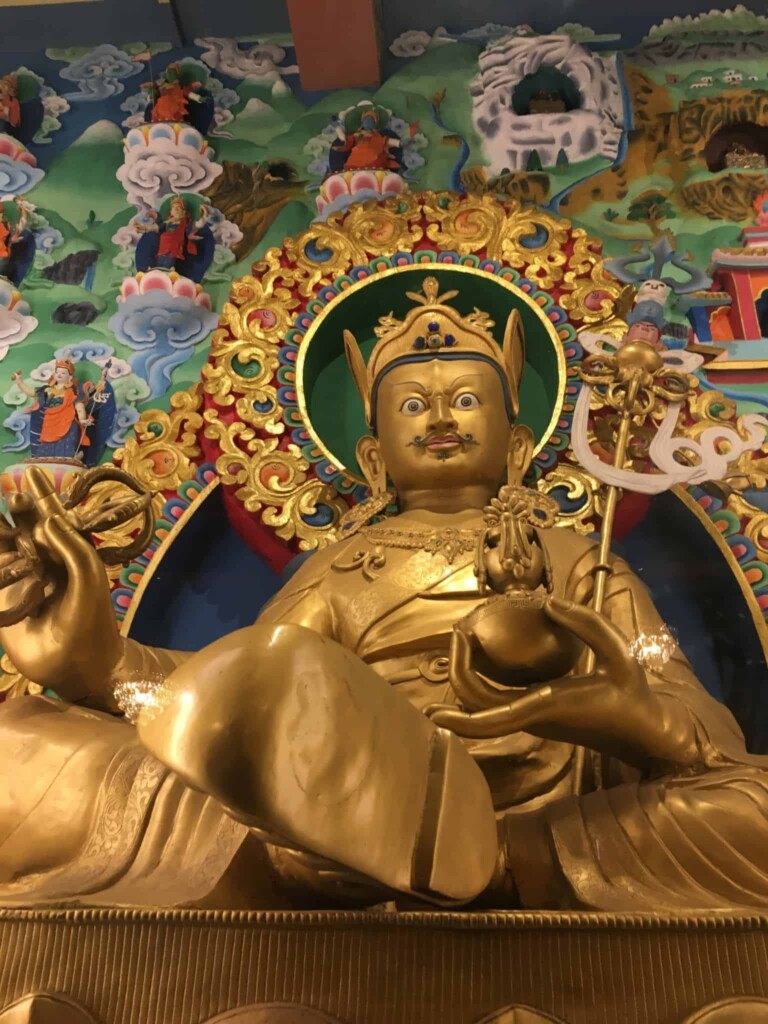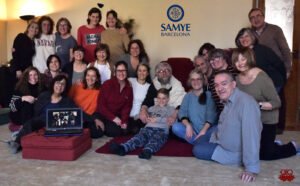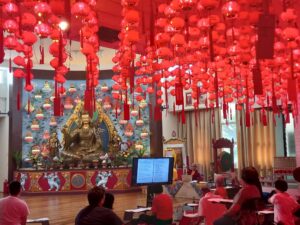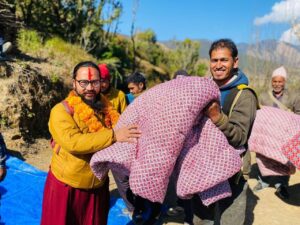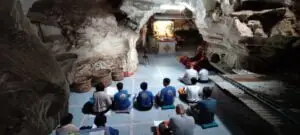Making an Auspicious Connection
As the third of the 2019 puja series, the Ngensong Dongtruk or “Dredger of the Lower Realms’ Depths” puja was held for three days from August 10th-12th at the Vajra Varahi monastery in Chapagaon.
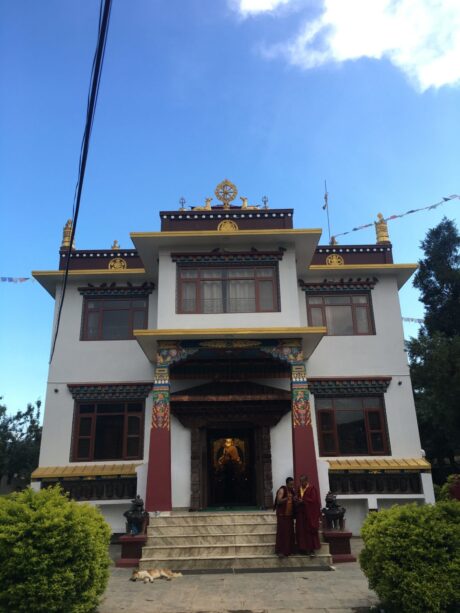
I’ve habitually been very bad at keeping track of our monasteries’ puja schedules and even worse with making the time to join. But this year Phakchok Rinpoche kindly made a list of these annual pujas, with international dates, and publicized them on Samye keeping us students informed. Thus, this year I thought ahead and booked my ticket out of Nepal a few days later than normal, which provided me with the great fortune of attending the Ngensong Dongdruk puja.
Why is Akshobhya in the center?
The principal deity of the Ngensong Dongdruk mandala is Chenrezik or Avalokiteshvara. However, if you look at the Ngensong Dongdruk thangka you’ll notice the bodhisattva of compassion is not the chief figure. Instead, in the center of the mandala, in dark blue, is Akshobhya. This thangka image is actually the front-visualization that is generated in the puja. Akshobhya is the buddha of the vajra family from among the five buddha families and the buddha of the pure land Abhirati.
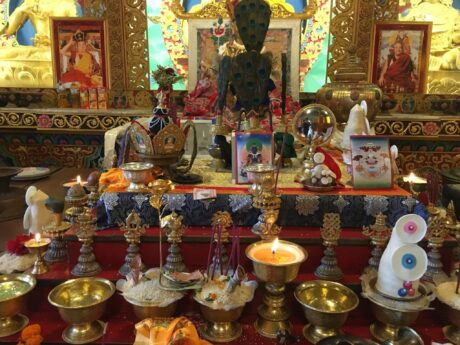
One interesting point about this pure land is the presence of women, whereas in Sukhavati there are said to be no women. Similarly, while other buddhas have made aspirations for the virtuous to be easily reborn in their pure lands, Akshobhya is known to have made aspirations for the non-virtuous, for those who have done bad, for criminals and outlaws. Akshobhya compassionately offers them his special protection and a place in his pure land Abhirati. Thus, it is Akshobhya feels particularly suited to the task of dredging up the lower realms from their depths.
What happens in this profound ritual?
One of the central practices to this puja is the name burning ceremony. The names of both the living and the deceased were written on pink and yellow cards respectively and kept on either side of the mandala until the last day. At first glance, this ritual might seem quite simplistic, but when you consider the different practices it involves, it is actually extremely profound.
After performing the main part of practice and accomplishing the vase, there was an empowerment section. It was after this section that the presiding vajra master would perform powa, or consciousness transference, on behalf of the departed, leading their conscious to the pure realms and to awakening. With their liberation secured, the names were burnt at the end and the ash was then to be later mixed with other blessed substances and clay to print tsa-tsas. These miniature stupa shaped tsa-tsas then are able to perform the benefit of sentient beings through their connection with these now awakened beings.
What is it like?
The Ngensong Dongdruk practice was in fact quite easy to follow along. It is not like other practices where there is a lot of jumping between texts or inserting of different prayers. We also had access to a draft translation of the text from Lhasey Lotsawa, which helped us even more to follow along and recite the mantras. As we chanted, I reflected on how, as non-Tibetan and non-monastic practitioners, we are actually in a very privileged position to engage in the Dharma. We don’t have the pressures to live up to cultural expectations like Tibetans do, nor do we have the responsibilities of executing the puja to the extent that the monks do.
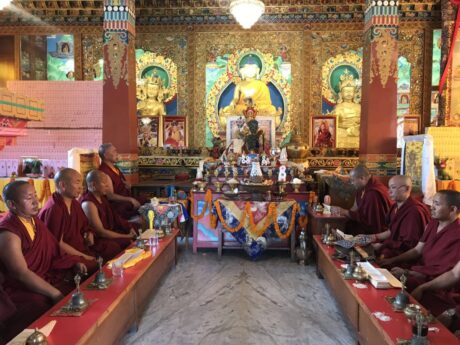
Furthermore, our tradition is particularly open-minded in allowing us to receive copies of the text and follow along. Often in Tibet, at least in my experience, there is a greater division between the monks who actually do the puja and the lay people who simply act as an audience. All of these reasons make for a very pleasant puja experience where you have the freedom to follow along in the text and accumulate along with the monks, but also the option to take a break and just soak up the atmosphere. Thus, I would strongly encourage all Dharma brothers and sisters who are not usually the puja-going type to bring a friend and join one of these pujas. This has been my personal reflection on the Ngensong Dongdruk puja. What I know about this puja is what I’ve heard from Rinpoche, however, since this was my first time doing this practice, please take what I’ve said here with a grain of salt. I hope to see all of you Dharma brothers and sisters at such pujas in the future!
